ASHES TO THEATER
It’s the spectacle that keeps on giving: No longer sprawling the width of the Neo Futurarium’s stretched-out stage or concentrated in Theater Wit’s proscenium hall, The Ruffians’ superb 100-minute Burning Bluebeard has now taken its glorious, dream-like make-believe and contagious magic realism to the Ruth Page Center for the Arts — in a production presented by Porchlight Music Theatre that ingeniously (and frugally) recycles the Paramount Pictures archway from their recent Sunset Boulevard.
Equally intimate and intense, it remains the hottest show in town, historically and aesthetically.
As in every season since its storied inception in 2011, Burning Bluebeard remains a bracing, bittersweet offering for the holiday season. It’s equally a tribute to the purest impulses of theater (“We just want to make you happy!”) and to the horror of unintended consequences. Reimagined from the inside out, its tragedy erupted during a merry Yule season 116 years ago. (Death takes no holidays.) Alternately comical and compassionate, writer Jay Torrence’s evocation of the Iroquois Theatre holocaust of 1903 captures a rapturous empathy with performers past and present: Here the innocence of entertainment clashes with the facts of a fire. Moving in every way, driven, inventive and blessed with perfect pitch, Halena Kays’ reprise staging rekindles a Christmas nightmare that’s impossible to exorcise.
Like the “unsinkable” Titanic, the “fireproof” Iroquois Theatre was brand new — a $6 million Loop playhouse enjoying its maiden season as it competed with Victor Herbert’s much finer fantasy Babes in Toyland. The terror on December 30th required only 15 minutes to become unforgettable: An explosion from a moonbeam lighting effect triggered a blaze that, fed by embers and backdrafts, spread across the muslin scenery, consumed a perversely combustible fire curtain, was fanned by the backstage door from which all but one of the 400+ performers escaped alive, and burst into a fireball, turning the upper balconies into a Viking funeral. The rampaging flames and towering smoke incinerated or choked 605 theatergoers (mostly women and children) of the standing-room-only, 1600-seat new theater at Randolph and State (where the James Nederlander Theatre now stands). We own this conflagration.
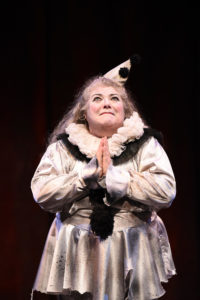 The show’s opening implies that, yes, the show does go on: The lost words of this unintended horror show have somehow soaked into the stage (Jeff Kmiec’s fire-ravaged broken proscenium and props, eerily lit by old-fashioned filament bulbs). Torrence imagines a Pirandello-like situation in which five clowns (emerging, ghost-like, from body bags on the stage) who experienced the disaster are forced (as Coleridge did his ancient mariner) to retell the tragedy until they can provide the happy ending that their long-dead audience had every right to enjoy.
The show’s opening implies that, yes, the show does go on: The lost words of this unintended horror show have somehow soaked into the stage (Jeff Kmiec’s fire-ravaged broken proscenium and props, eerily lit by old-fashioned filament bulbs). Torrence imagines a Pirandello-like situation in which five clowns (emerging, ghost-like, from body bags on the stage) who experienced the disaster are forced (as Coleridge did his ancient mariner) to retell the tragedy until they can provide the happy ending that their long-dead audience had every right to enjoy.
These heartbroken zanies must complete the silly Christmas pantomime Mr. Bluebeard whose second act became a Chicago hell rivaled only by the bigger one of 1871 or the Our Lady of Angels school fire 53 years later. Poorly reviewed and, until that day, badly attended because of the weather, a recession, and a transit strike, the panto (hardly family fare if you consider its content) depicted the “chamber of horrors” where Bluebeard impaled his wives. (It was one of 260 set pieces in the mammoth extravaganza.) The matinee ended for all by 4 p.m. (with all the watches frozen at 3:50), just as, accompanied by their cavaliers, the six wives of the spouse-slaughtering title king with his murder room and bloody key strolled out to sing the simpering ballad “Under the Moonlight.” Who knew that a stage illusion could conceal the Angel of Death?
Haunted by guilt over the loss of so many innocents, Torrence’s troupe is doomed to move beyond that second-act firestorm and prove that art can improve on life — and transcend death.
The acrobatic and supple cast — Pamela Chermansky, Anthony Courser, Dean Evans, Crosby Sandoval, Jay Torrence, Leah Urzendowski and Ryan Walters (most returned from the original production) — play Iroquois Theatre survivors, ranging from the headliner and Chicago favorite Eddy Foy to a literally death-defying aerialist Nellie Reed (the one performer to die in the blaze), an overwhelmed stage crew boss, and clueless Fairy Queen, sardonic “fancy clown.” (We can only guess at the appalled audience members.) Choreographer Ariel Triunfo balances the period’s stylized melodrama, including a pathetic roundelay by the six butchered brides, against the frenetic pace of this often sassy second coming.
Handing out gift light boxes to audience members (which will be opened to suggest keys to the “Bluebeard” scenes they reenact), the cast absorb the audience into the action, with one spotlit soul sitting in for the unluckiest little boy in Chicago (who turns out to be the luckiest as well).
Notwithstanding its non-negotiable disaster, this perverse “panto” — a pageant with ”flair” — with its gallows humor can be screamingly funny: To a rollicking rap rhythm and employing a complex blackboard drawing, they point out the perilous escape routes from the doomed downtown venue to the protection of Randolph Street. (The incendiary Iroquois Theatre gave a whole new meaning to exit strategy.)
As Courser, who plays the title character Henry Gilfoil, opines about the serial-killing husband he depicts, “a healthy dose of fear” is good for children. But this night the dose is fatal: Everything that could go wrong did, including fire doors that sadistically opened inward, exits blocked by curtains, a fire curtain that got stuck halfway down, and flammable material which finally included humans.
Their recreation of the first act includes restoring an elaborate ballet sequence that, though it made no sense in a plot that made even less, constituted one more special effect to delight the entranced, doomed crowd. As the fake moonlight sparks real flames, once again Eddie Foy fatefully tells the children to stay in their seats’”the worst possible advice. Again, concealed exits create stacks of burned bodies. As stage smoke pours in, obscuring everything, and lights flash red, the actors perform a seated danse macabre: Then total darkness: We hear an unbearable, minute-long sound recreation of the firestorm, screaming kids, and deafening panic. The inferno and its human sacrifice could not be more insidiously cloned.
But Burning Bluebeard pushes beyond its title: In a final tableau the sextet are granted a happy rather than hideous ending, with the wife killer Bluebeard properly disposed of (as the children on December 30, 1903 never got to see). For one more night — and nine seasons so far — The Ruffians’ art, a salute to thespians past and future, has triumphed over the Iroquois Theatre’s senseless slaughter. The purgation works: In perhaps their finest offering ever, The Ruffians deliver a “gift” for Chicagoans whether they deserve it or not.
photos by Michael Courier
Burning Bluebeard
The Ruffians
presented by Porchlight Music Theatre
The Ruth Page Center for the Arts, 1016 N. Dearborn S
Thurs, Dec. 19 at 7:30; Fri, Dec. 20 at 8; Sat, Dec. 21 at 3:30 and 8;
Sun, Dec. 22 at 2; Thurs, Dec. 26 at 1:30 and 7:30; Fri, Dec 27 at 3:30 and 8
ends on December 27, 2019
for tickets, call 773.777.9884 or visit Porchlight

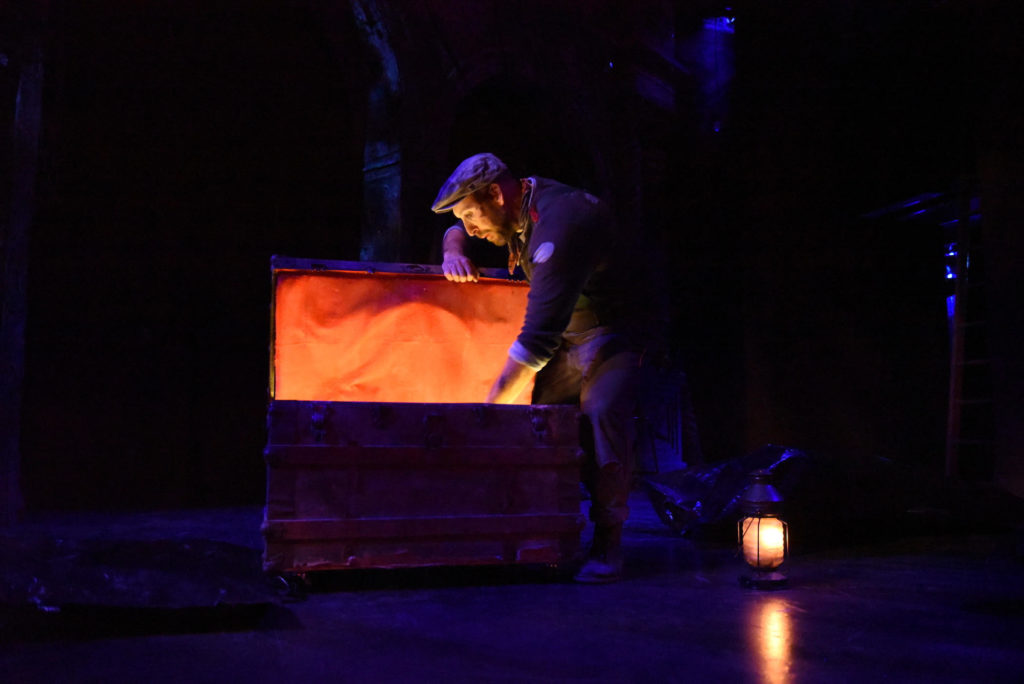
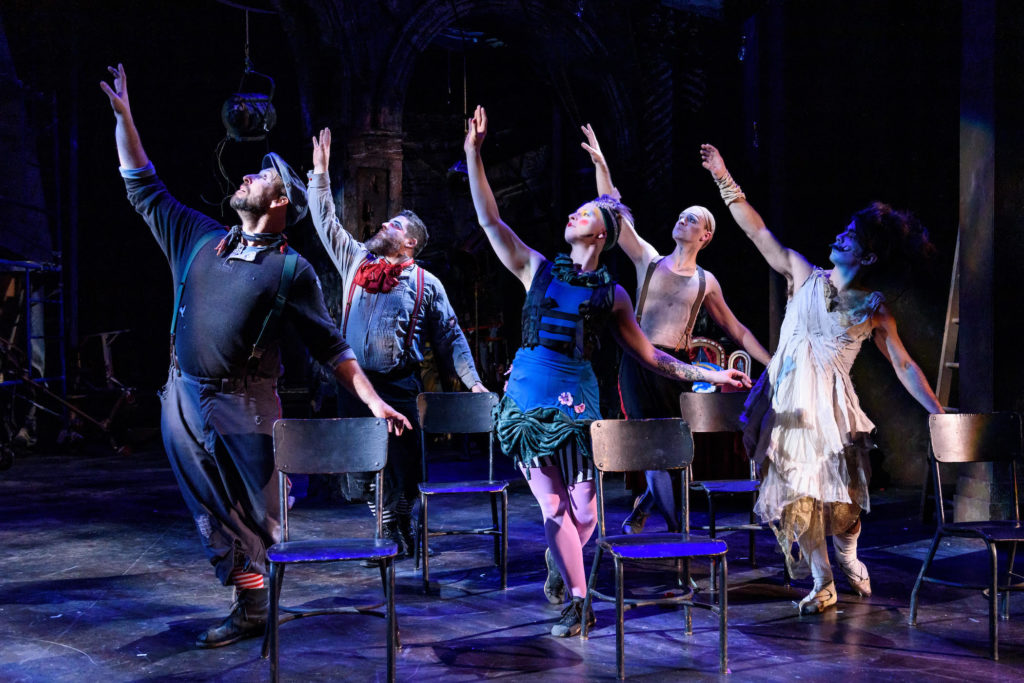

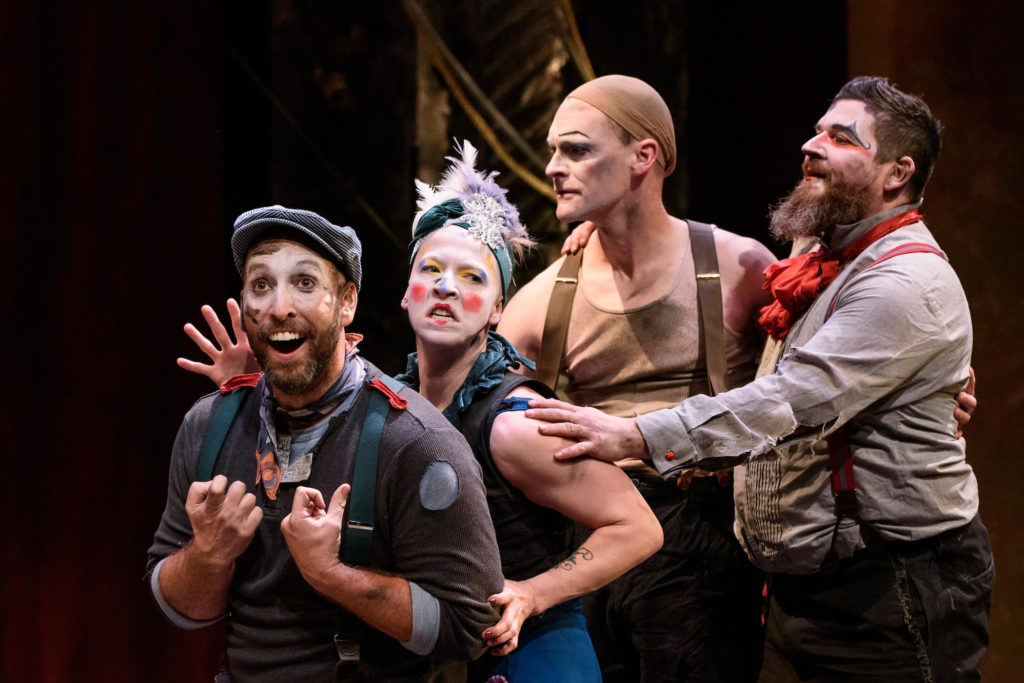
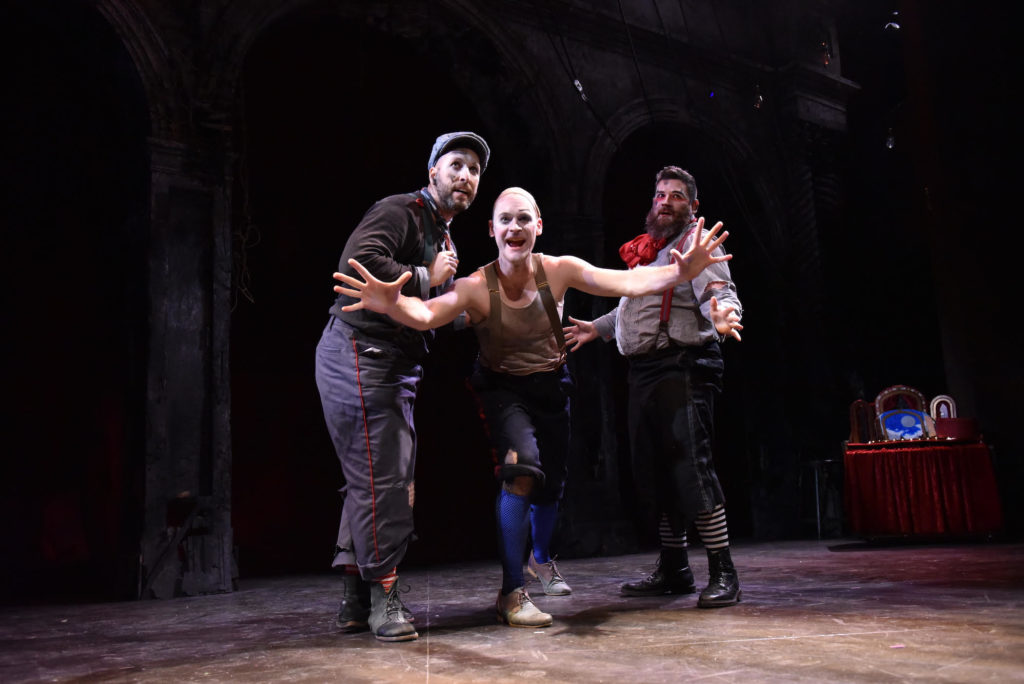
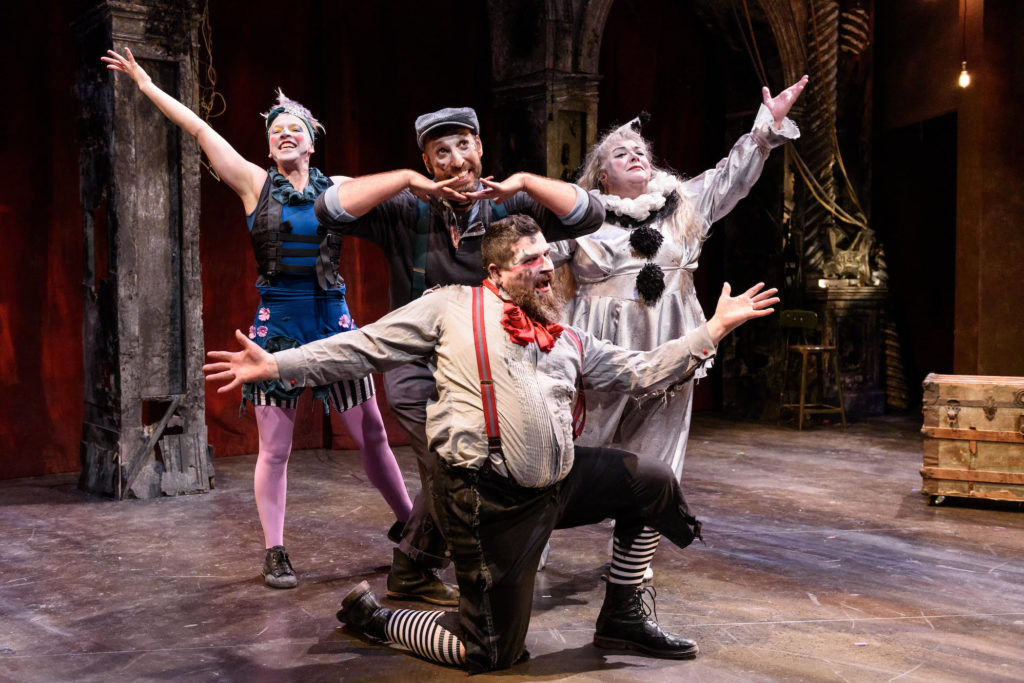

{ 2 comments… read them below or add one }
Hello! I just love Burning Bluebeard – this will be my 4th holiday attendance. I was wondering if I could get a copy of your review including the pix as they have not have a actual book of the show available. Did your review also appear in a hard copy magazine? Is it available to buy? Thanks for your time.
This site is the only place to find the review, Kathleen. So you’ll have to print the review for your records.